Our lunch group enjoyed another fine luncheon in our dedicated Library Room at the Santa Barbara Club.
Our wine theme was a broad and varied category, Southern and Southwest France. Chateauneuf du Pape and Gigondas from Southern Rhone….Provençe, Languedoc and Roussillon….Savoie….Cahors, Madiran, Jurançon….numerous smaller AOCs. It made for some interesting wines.
Table raves confirmed Chef Huberto prepared another fabulous meal which in this case consisted of:
First Course
French Onion Soup
Second Course
Rack of Lamb with ratatouille stuffed mushroom and lamb sauce
Third Course
Duck Breast Confit with parsnip puree and duck sauce
Cheese Course
Roquefort
Dessert
Chocolate pecan tart
We started off with champagne:
2012 FALLET-DART BRUT- 70% Chardonnay, 30% Pinot Noir; nice citrus fruit is enhanced by accents of hay, straw and lemongrass while being delivered in a palate feel good frothy mousse.
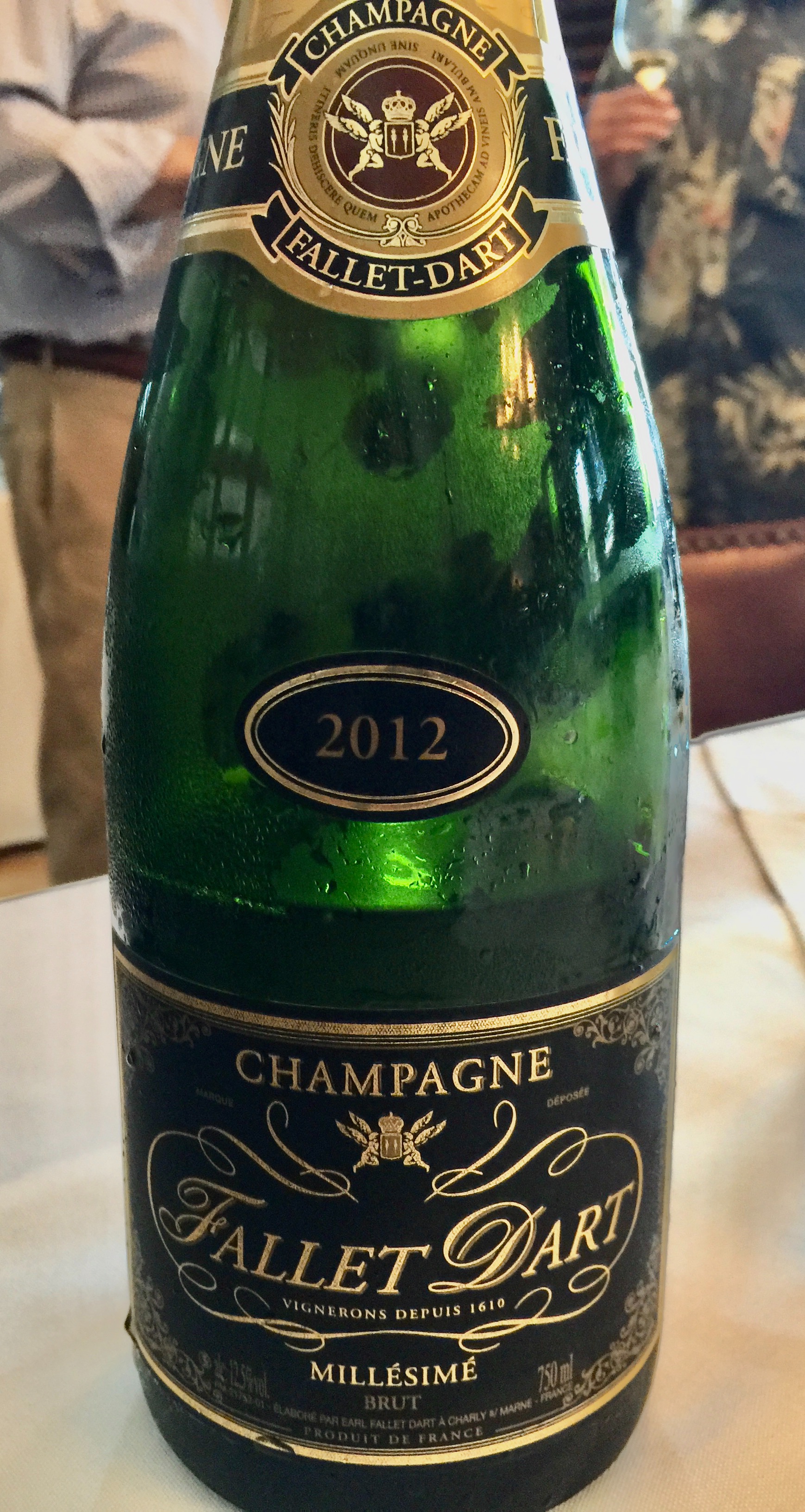
First flight of 3 whites and 1 rose wine:
2015 ROTEM & MOUNIR SAOUMA MAGIS CHATEAUNEUF du PAPE BLANC- 75% Grenache Blanc, 10% Clairette, 10% Roussanne and 5% Bourboulenc, aged 18-24 months; 14.0% abv; a buddy in my dinner group brought this wine a few months back and I had to have it, this being the 2nd bottle I’ve opened since buying a 6 pack; unlike the first 2 bottles, this one was not in balance with the flint, mineral and wet stone notes dominating the underlying citrus fruit; in the past, lemon, lime, pear and green apple held its own with evenly distributed acidity, flint and minerals; it had a buttery, vanilla like component and an oily texture; after some time, it seemed to come together and tend toward balance, but that flinty, gun power aroma still persisted above and beyond. The back label suggests this should be decanted and I agree although I failed to do so in this case.
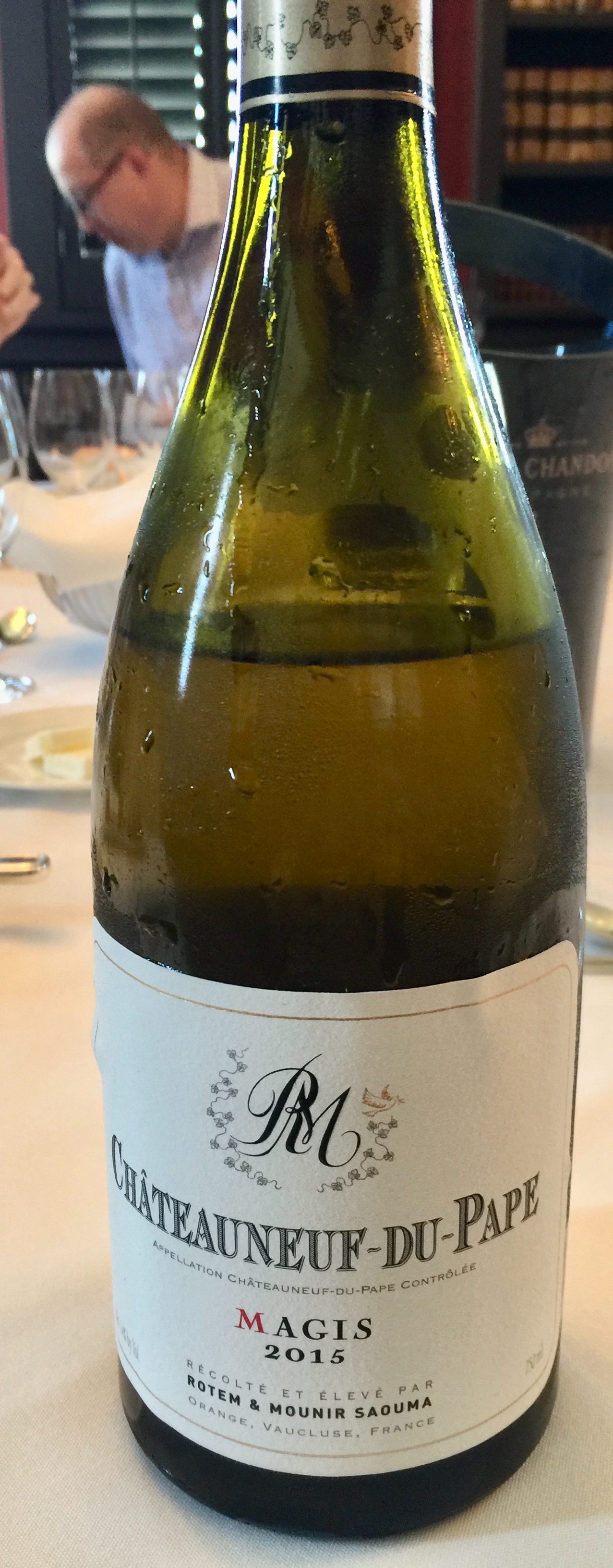
2011 HENRI MINA BLANC IROULEGUY- made from Petit Courbu, Gros Manseng, and Petit Manseng; this was dry and yet sweet with lightly candied citrus fruit accented by a streak of minerals; once tasted, the citrus turns out to be grapefruit and lemon zest; it was refreshing, had a nice element of elegance and finished with another onslaught of minerality.
2018 DOMAINE TEMPIER ROSE BANDOL- 55% Mourvèdre, 28% Grenache, 20% Cinsault, 2% Carignan; 12.5% abv; straw, hay and grass are joined by a strong injection of minerals and honeydew melon in this mild mannered, medium bodied rose which drinks better with food than without.
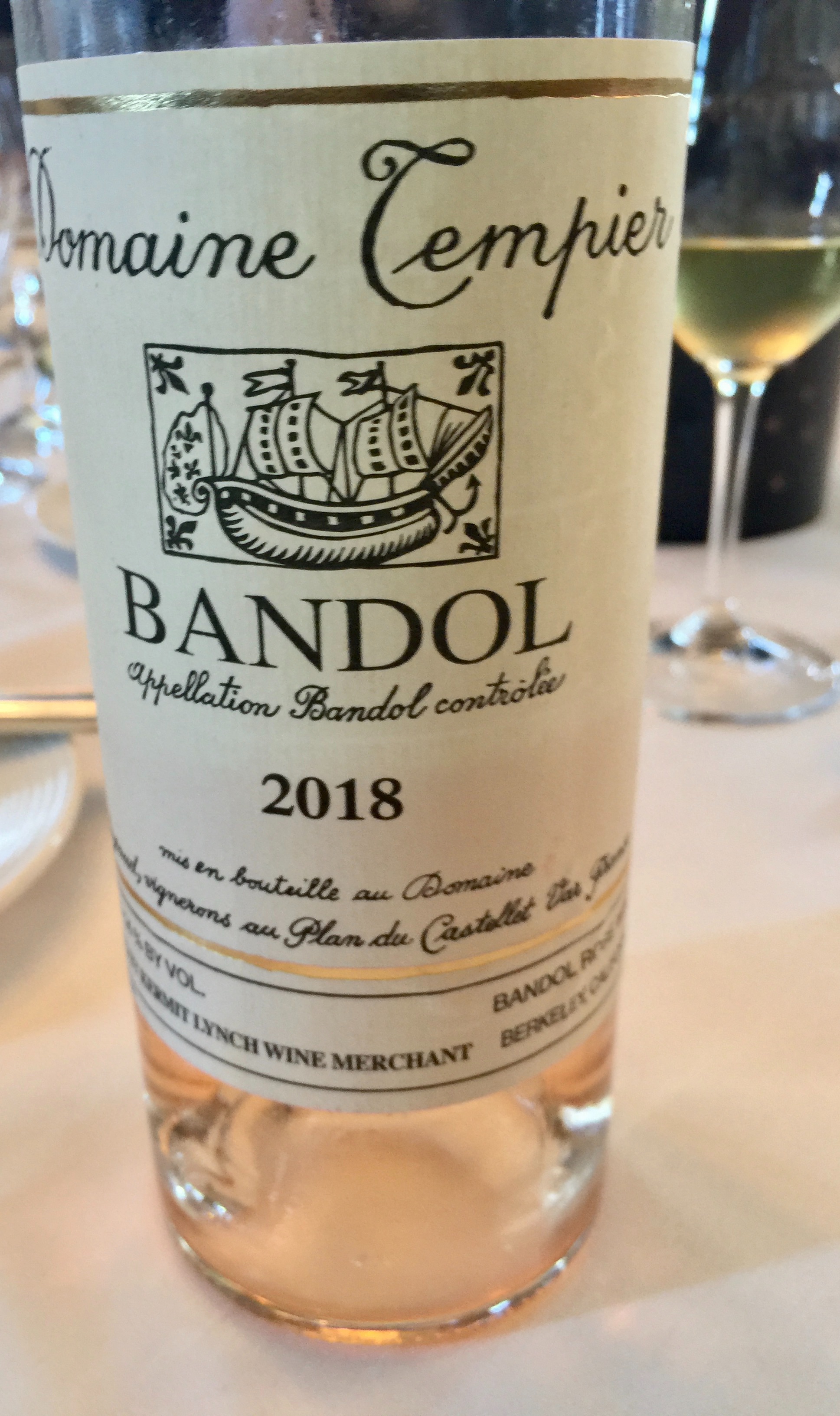
Next up, 4 reds:
1995 CHATEAU RAYAS PIGNAN RESERVE CHATEAUNEUF du PAPE- decanted and poured; this is the 2nd wine for Rayas albeit being very distinct in that the Grenache fruit comes from their most northern vineyards; the vines are surrounded by pine trees {Pignan, in French}, but I did not pick up on any pine notes which I would have expected; it had a medium red color, an inviting nose of fresh red cherry fruit which was found in the taste profile along with red raspberry; it finished with a puzzling milky note.
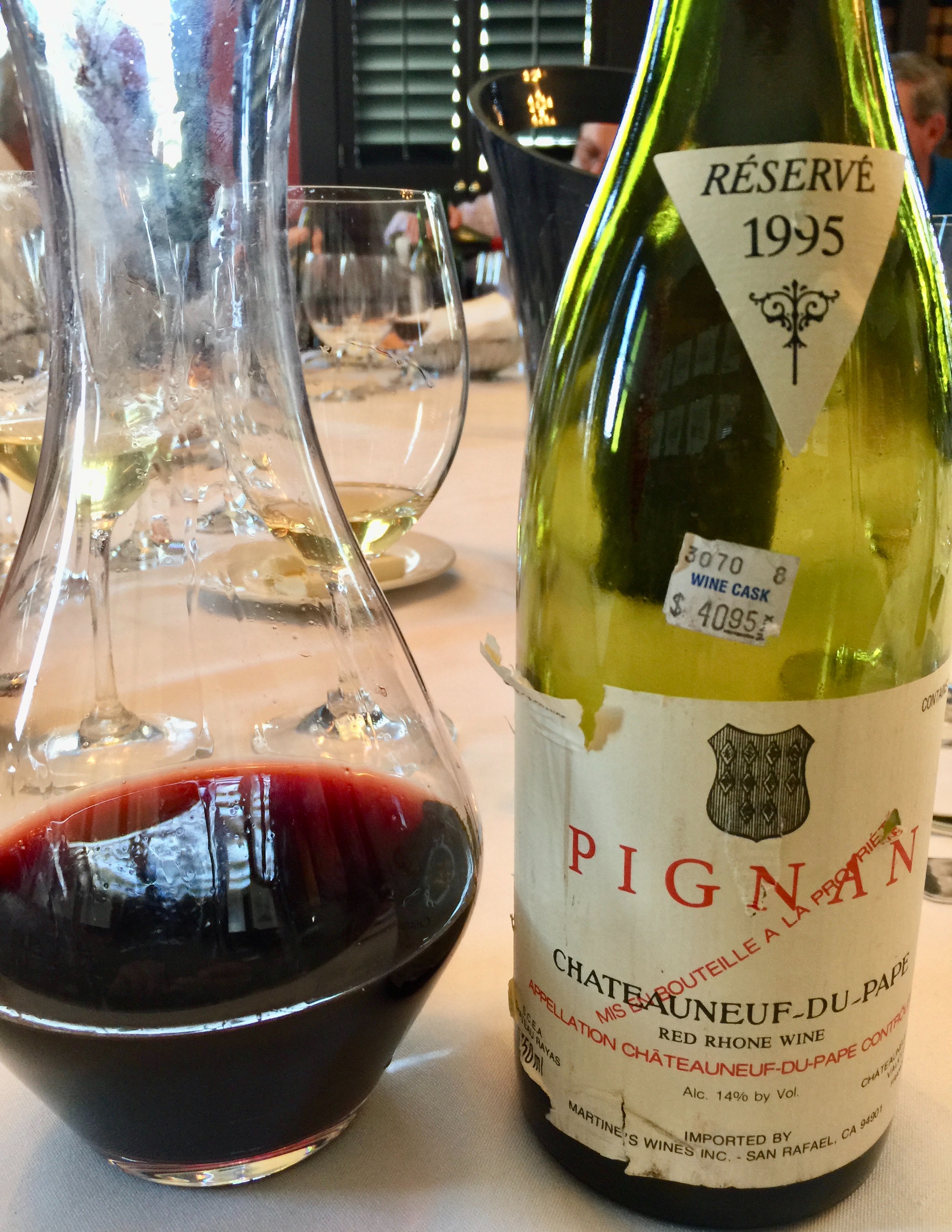
2000 DOMAINE de la MORDOREE CUVEE de la REINE des BOIS CHATEAUNEUF du PAPE- 70% Grenache 10% Mourvedre, 5% Cinsault, 5% Syrah, 5% Vaccarese; fortunaltey, I`ve had a few bottles of this gem and was delighted to find this one showing equally as impressive as the others; it had magnificent balance along with a stellar taste profile while being highly energetic throughout; the vibrant dark red purple color first announced it’s youthfulness, then spicy red cherry/ berry fruit came on in spades while being delivered in a soft and easy texture all the way to the back end; it was full bodied and rich and yet had finesse and charm; wonderful wine and eventually tied for my #1 red WOTD.
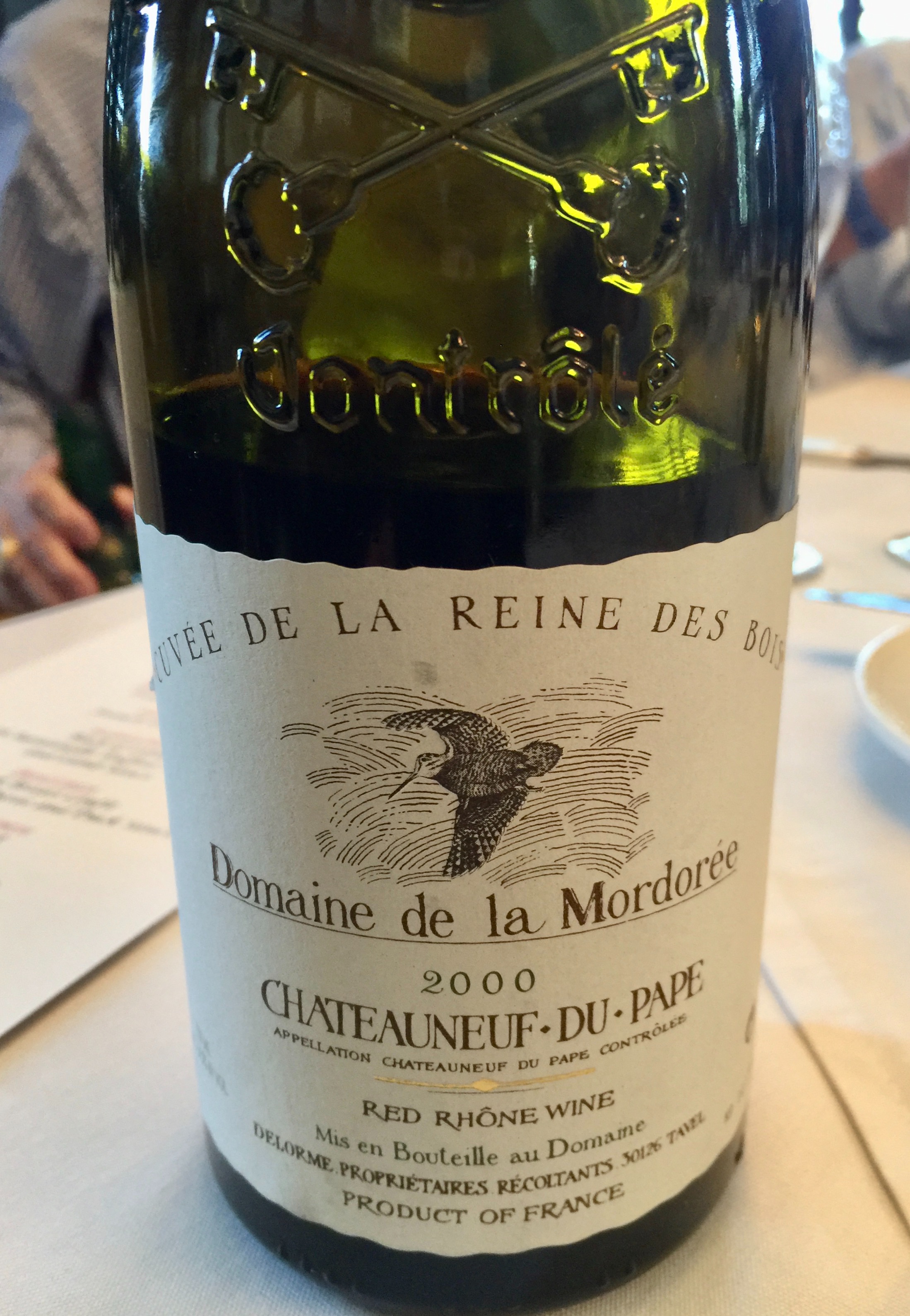
1998 CHATEAU MONTUS CUVEE PRESTIGE MADIRAN- 100% Tannat; 15% abv; amber color; initially there was some funk in the nose including earth and leather aromas suggesting a hint of Brett, but after short time, it turned out to be more than a hint and the 4-ethylphenol compound won out and left us with barnyard and bandaids.
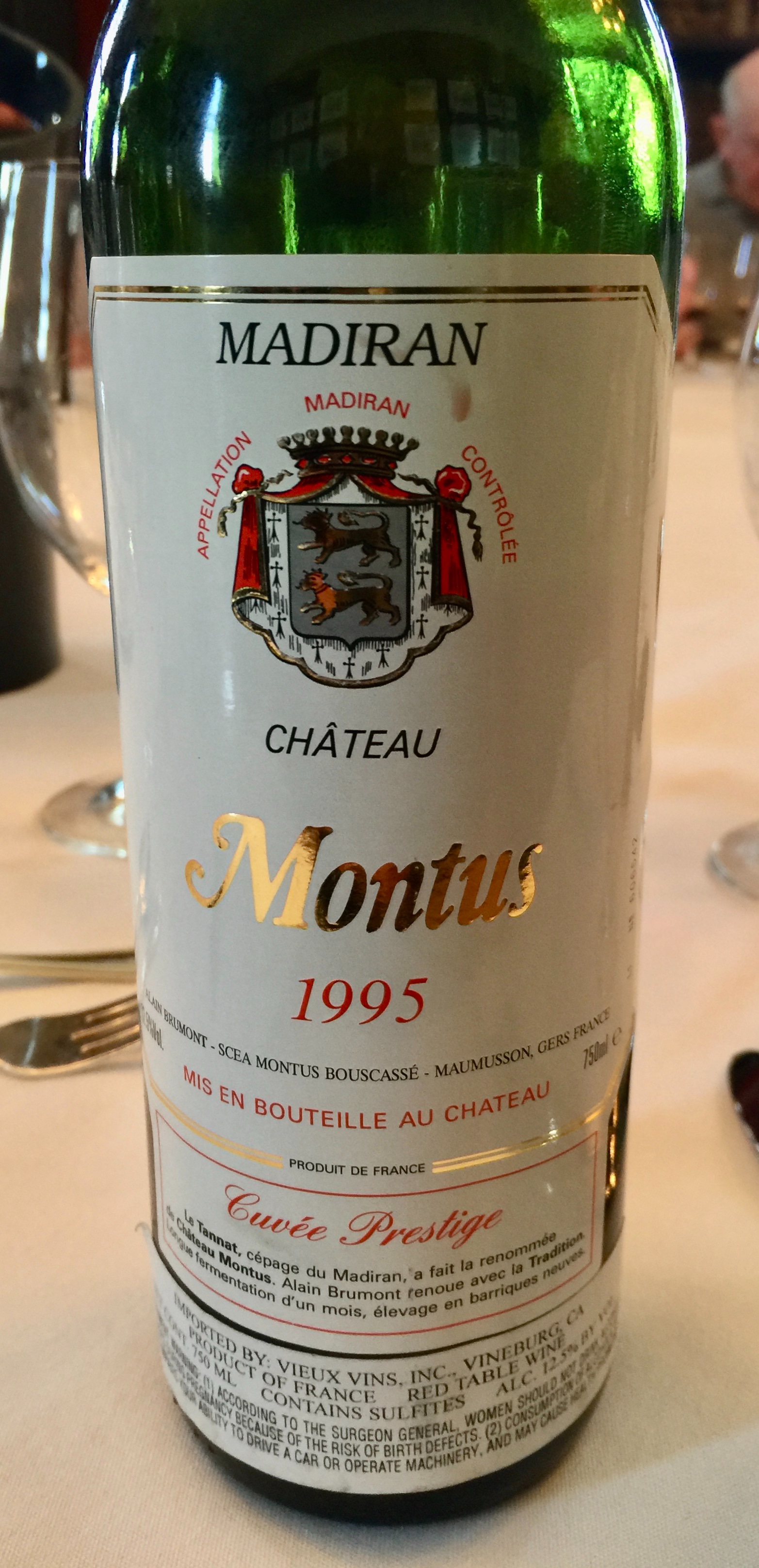
1996 CHATEAU RAYAS RESERVE CHATEAUNEUF du PAPE- 100% Grenache; the color was a fading light red; the nose immediately pleased with mild pepper and spice notes that I so adore in most wines and that accent stayed the course throughout, joining in with nice red cherry/ berry fruit and being delivered with a soft and smooth mouthfeel; this was very light in weight and body which gave it an element of elegance; my co-red WOTD along with the Mordoree.
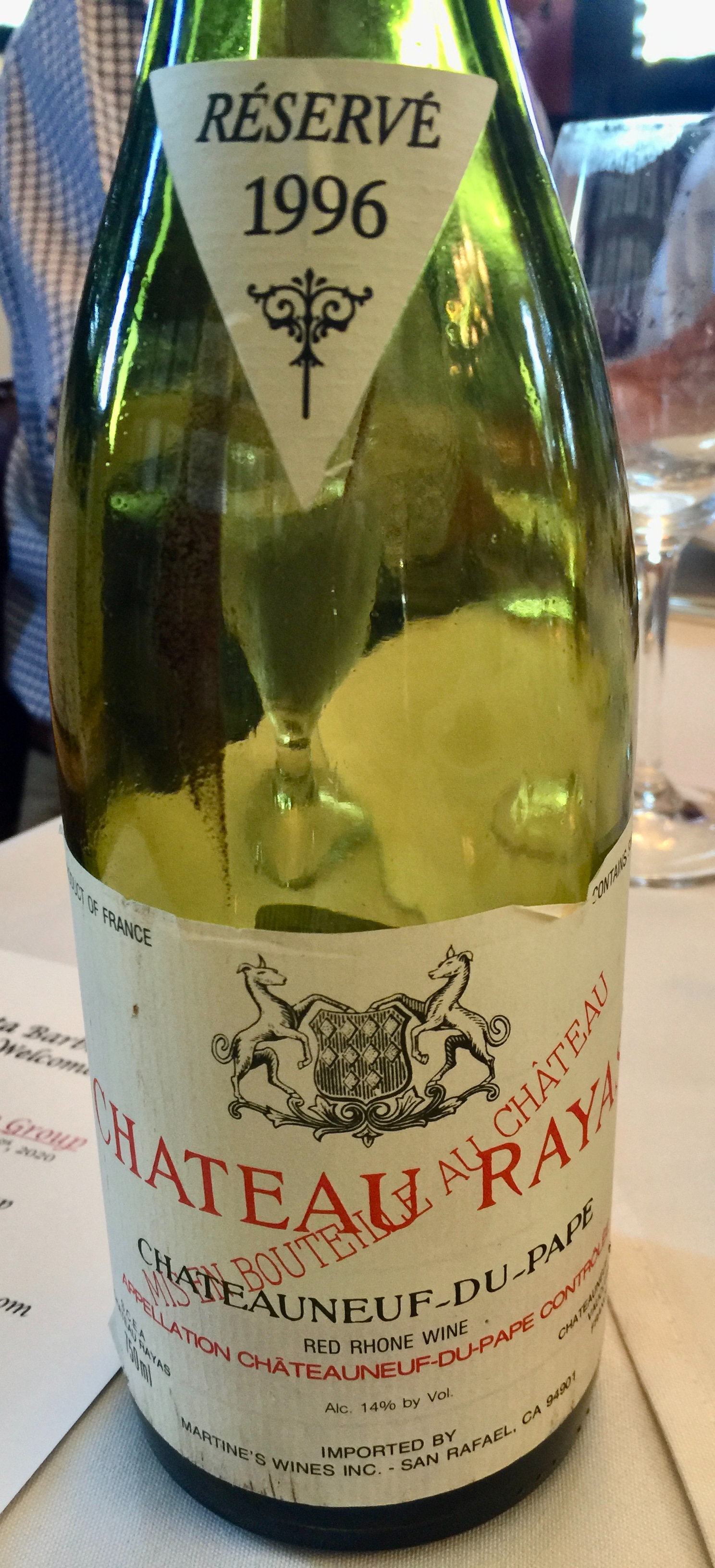
Our next flight consisted of 4 more reds, all from CdP:
2005 BEAUCASTEL CHATEAUNEUF du PAPE- I read on Wine Searcher the following: “François Perrin, son of Jacques, says it’s important not to confuse reductive aromas produced by a high percentage of the Mourvèdre variety in Beaucastel wines with a presence of Brett. However, he acknowledges that the yeast can be found in “older vintages”. Luckily, this problem has now been solved by renewing the large wooden vessels used to age the wines, as well as by improved hygienic processes throughout. Current vintages of Beaucastel are thus analytically "brett free.”
There was no hint of Brett here, it was full on; I guess this is considered to be an “older vintage”. I certainly found plenty in the late 80s, early 90s bottles, but this is 2005. Maybe they need to wash their hands more often as touted as being the #1 preventative measure for the coronaviruses.
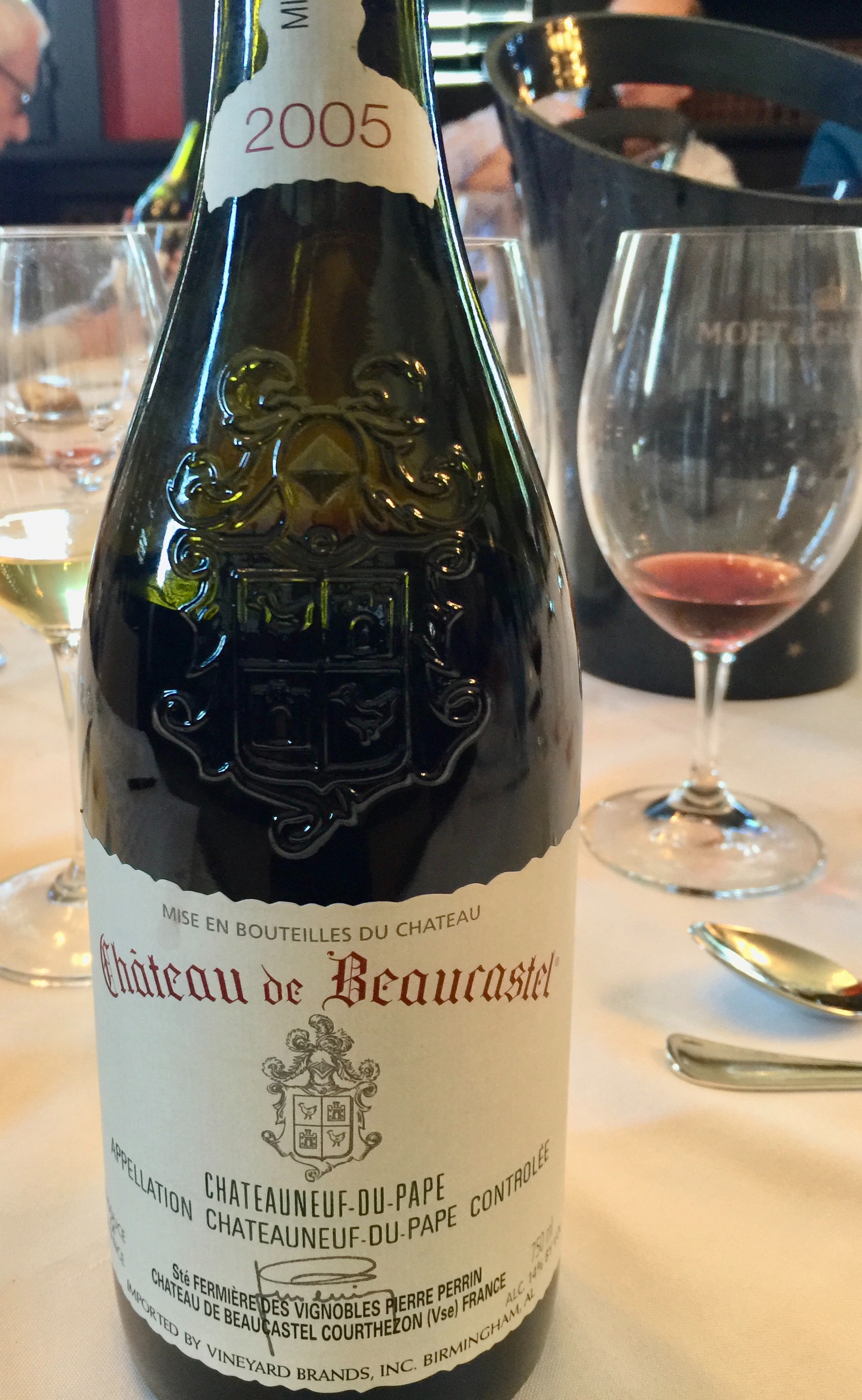
2011 DOMAINE de BEAURENARD CHATEAUNEUF du PAPE- 70% Grenache, 10% Syrah, 10% Mourvèdre, 6% Cinsault and 4% other; for such a young wine, everything was very understated from the nose through the tail, even the weight and body was very light; some wild red cherry/ berry fruit was most prominent and a touch of black raspberry joined in past mid palate; perhaps this bottle was in a more closed down, valley state.
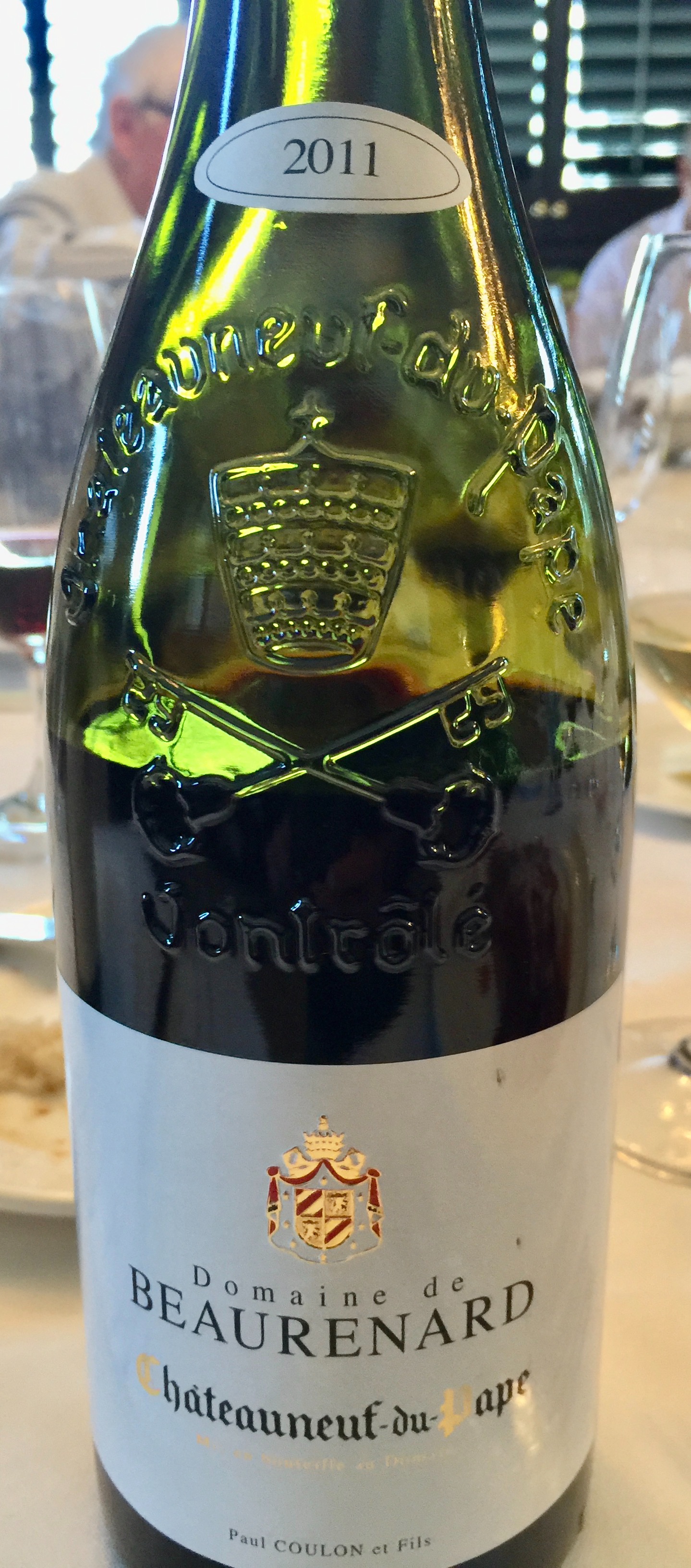
2001 DOMAINE GRAND VENEUR les ORIGINES CHATEAUNEUF du PAPE- 50% Grenache, 20% Syrah, 30% Mourvèdre; here`s another softy with a silky smooth texture and mild expressions of talc, sandalwood and rose petals providing accents to the red cherry flavors which in time became richer; this was very easy to like and almost sip like an aperitif.
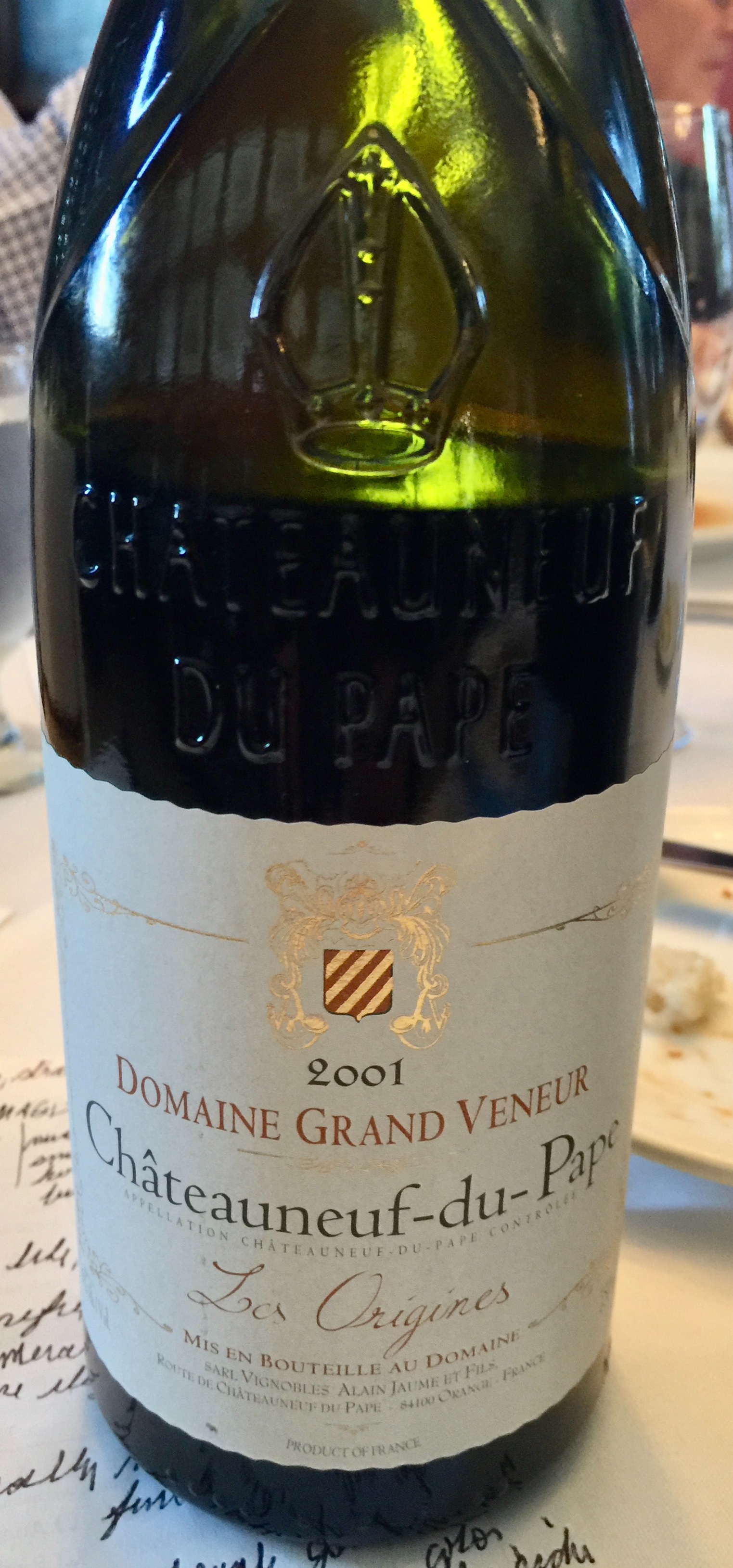
2000 DOMAINE du PEGAU CUVEE de RESERVEE CHATEAUNEUF du PAPE- 80 % Grenache, 6 % Syrah, 4 % Mourvèdre and 10% other; the hallmark of this bottle was it’s amazing smooooothness although I am also a fan of the pepper, licorice and spice notes that were just perceptive enough to please; the texture felt like a Merlot; again, this was a mellow wine with all of its treasures just easing out; mild flavors of plum, black currant and blackberry were just barely discernible. Being 20 years old, I’d think this was not in an early shut down phase, but more a bottle variation or an atypical stylistic preference.
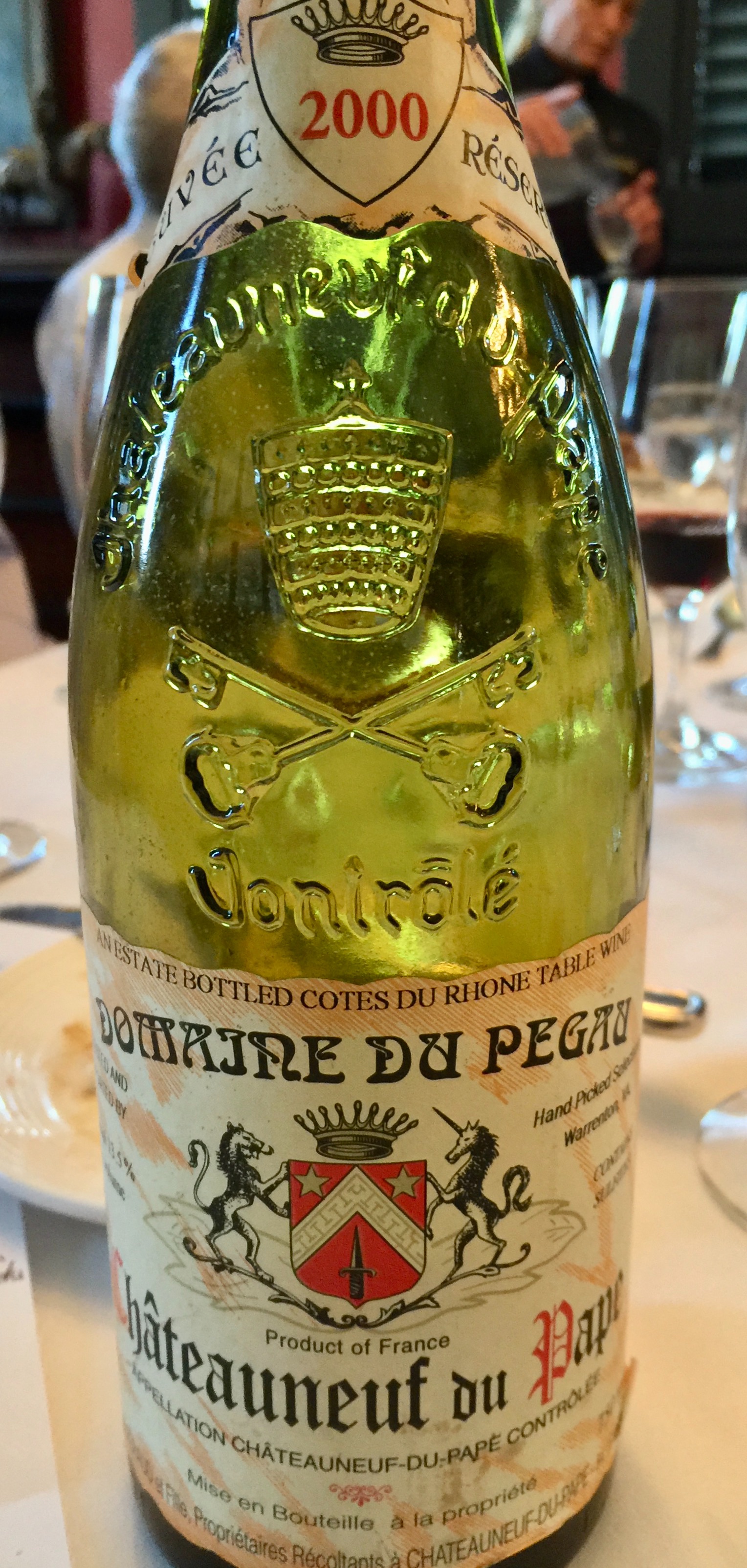
I was spoiled at a recent wine dinner I attended in that we were asked to not bring any dessert wine due to the high alcohol and that most were driving to and from the venue. What a concept! It may be apparent to some of you, I’m not a huge dessert wine fan, but do take a SMALL pour and smaller sip when presented. Now I get to do that times 4:
2010 CHATEAU SIGALAS RABAUD SAUTERNES- 375 ml; Ho Hum! just another honeyed, creamy, rich apricot, honeysuckle, caramel and butterscotch treat in semi- liquid form; if only I could cash in on the liquid gold color.
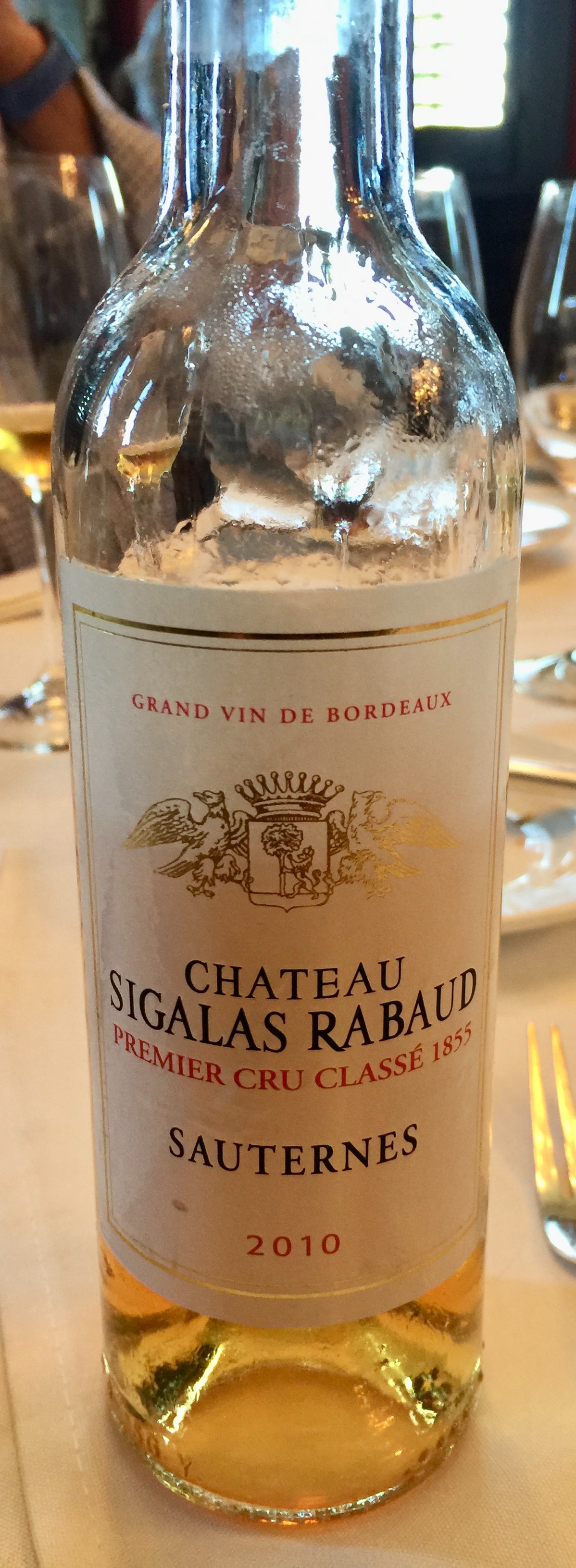
1936 RIVESALTES VIN DOUX NATUREL MUSCAT de RIVESALTES- 750 ml; 16.3% abv; this natural sweet wine or VDN had a brown hue to the light red color; the nose and taste had a multitude of flavors including coffee, maple, apricot and dried cherry. This cat had some musk in it which is probably why there were some wild tigers on the loose outside our building.
VDNs are made by mutage, a process of stopping must fermenting while there is still a high level of natural sweetness. With their high levels of residual sugar (a minimum of 100 g/l) and alcohol (between 15% and 17% ABV), these wines are sweet and relatively viscous.
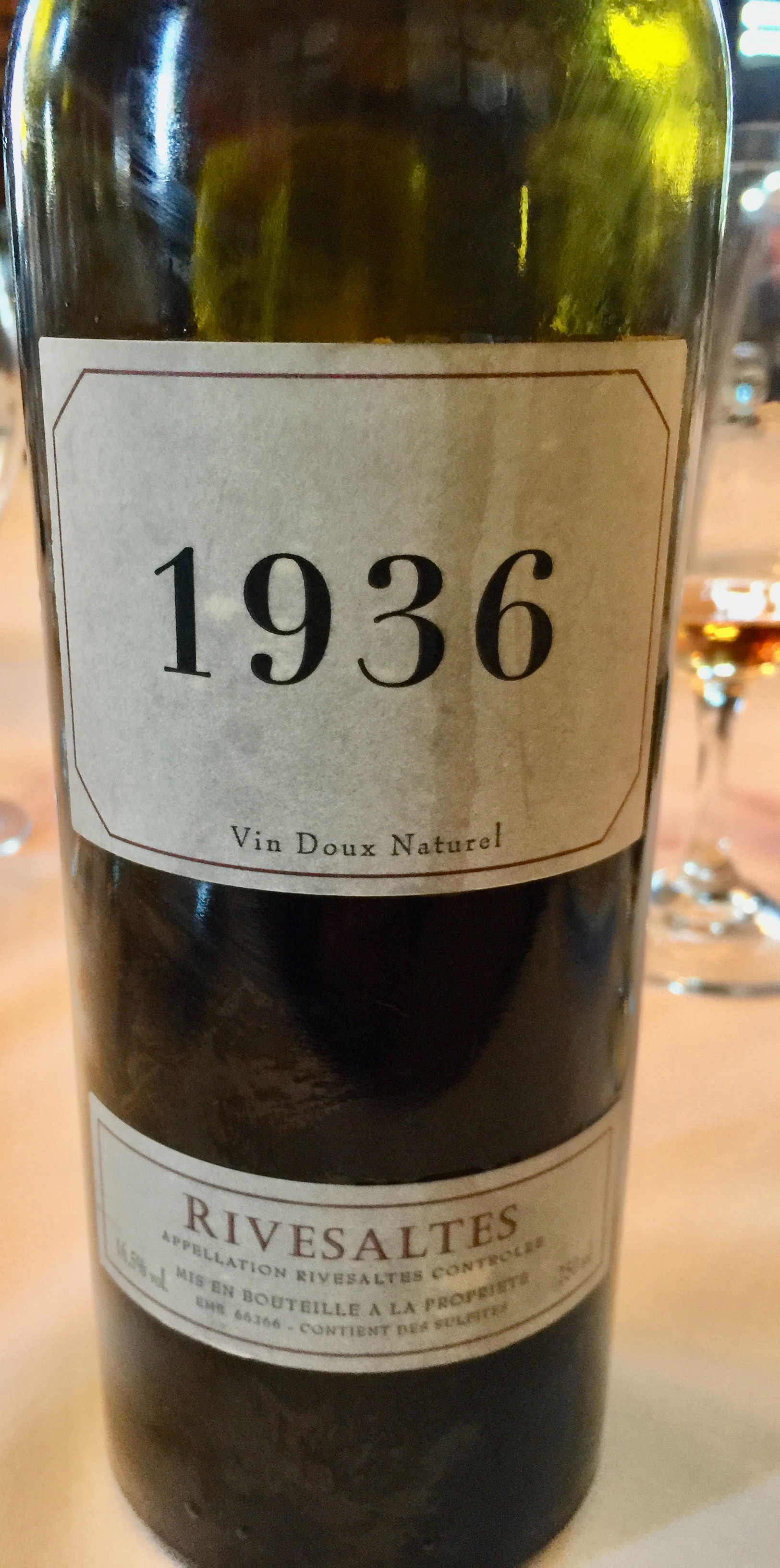
1979 L`ARCHIVISTE VIN DOUX NATUREL RIVESALTES- this was initially produced in 1975 using 50% Grenache Noir, 30% Grenache Blanc, 15% Grenach Rosé and 5% other, then aged 3 years in concrete vessels, followed by resting in old foudres for 37 years until bottled directly from the barrel without any treatments, in December 2018 under the “L’Archiviste” label; following the Port like aromas, came caramel, almond and dried cranberry notes, all being served up in an oily medium.
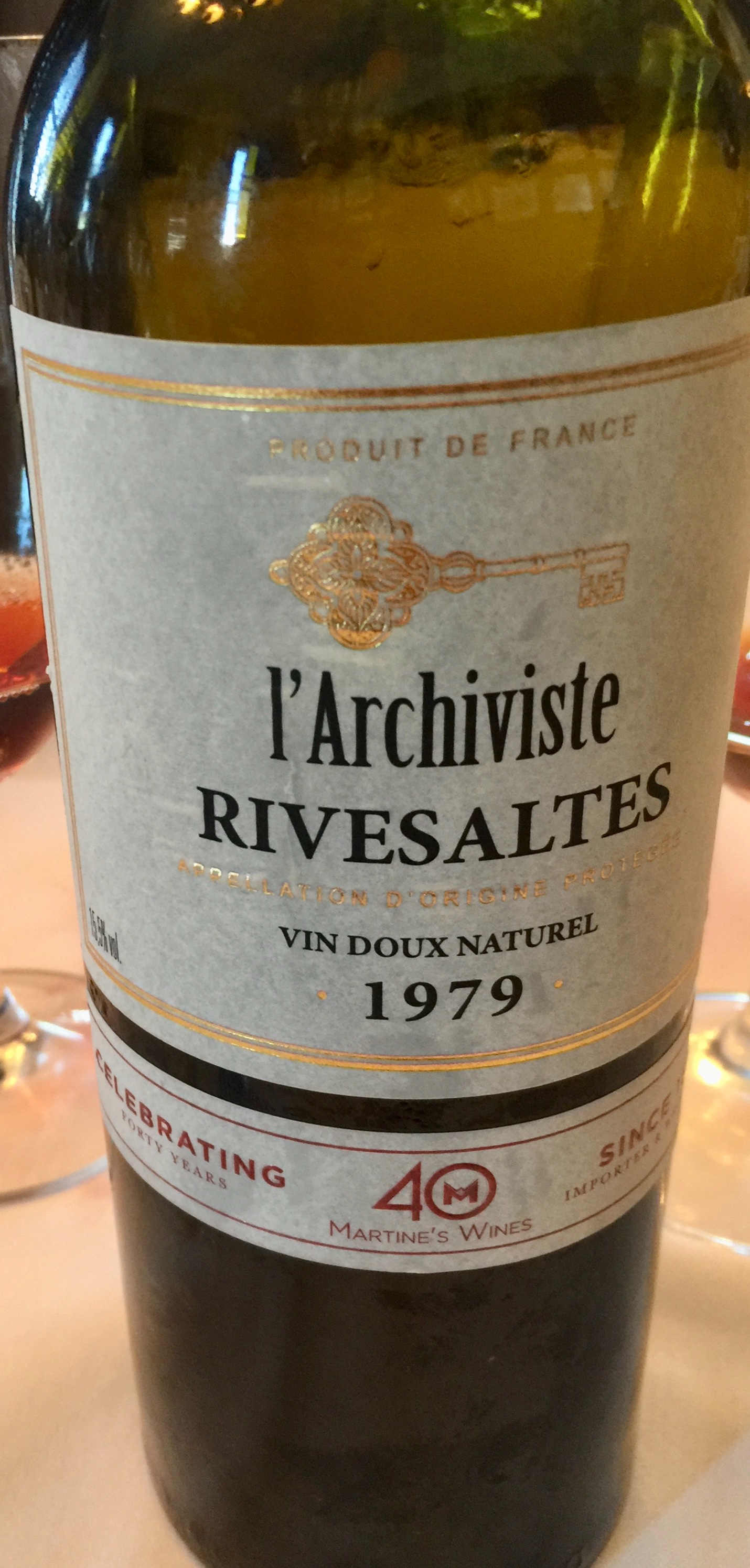
NV R. L. BULLER & SON CALLIOPE RARE MUSCAT RUTHERGLEN - 375 ml; dark amber, maple color; this had honeyed apricot plus accents of maple and dark chocolate which were most discernible in this thick, syrupy Aussie desert wine that comes in a long, tall, skinny bottle; it almost required turning it upside down to allow drops to be emitted. Whoever thinks of making these kinds of wines and how much can one drink/ chew on it? I could have used my fork. I can envision this being touted by an Old West medicine man raving about its miracle cures. Come one, come all for whatever ails ya.

OK, it was a really good day, dessert wines and all.
Cheers,
Blake